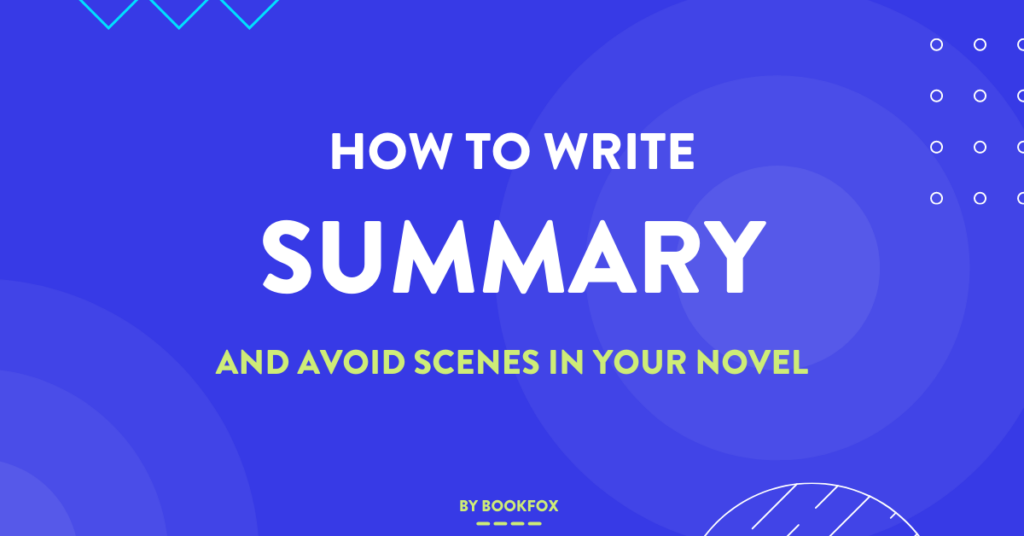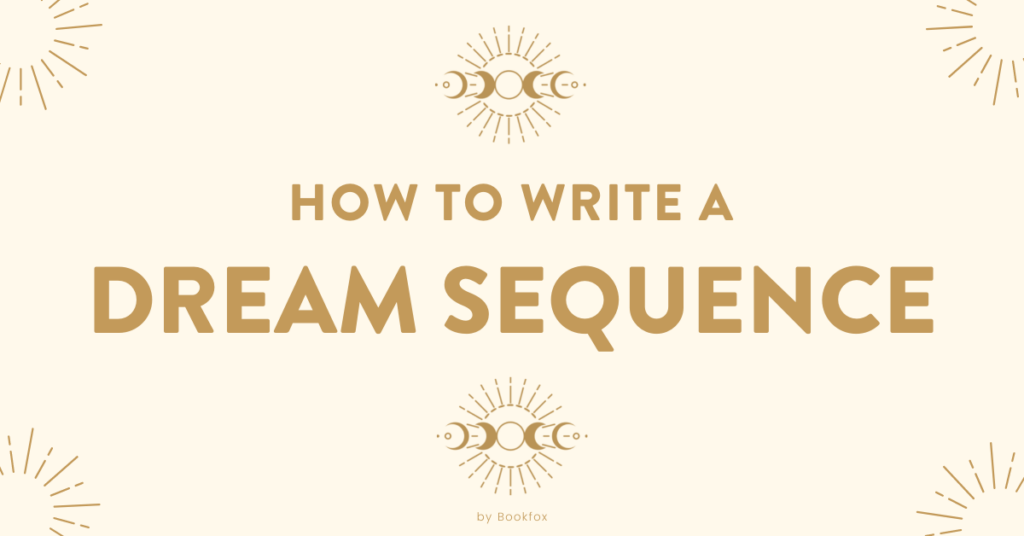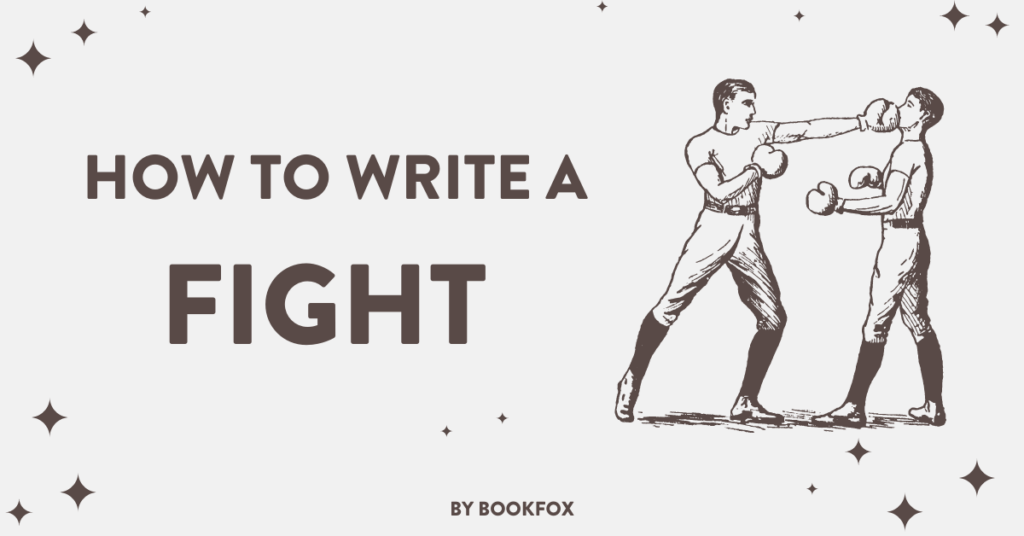
Everyone tells you to write scenes. To show, not tell.
But what if that was … bad advice?
Or at least limiting advice, because virtually every great book in history uses summary and “telling” in at least a few places in the book.
And surprisingly, some books use summary for MOST of the book. And somehow it’s still compulsively readable.
The trick is how to “tell” or summarize a scene well.
And as I always say, the best step to learning is to study the masters.
What exactly does using summary rather than a scene, or telling rather than showing — what exactly does it allow the writer to do?
Well, here are several ways that using summary helps the writer be a good storyteller.
1. Summarize the Pivotal Moment
In Elena Ferrante’s “The Days of Abandonment,” we have a book that starts with summary.
And not boring summary, either, but a critical moment.
“One April afternoon, right after lunch, my husband announced that he wanted to leave me. He did it while we were clearing the table; the children were quarreling as usual in the next room, the dog was dreaming, growling beside the radiator. He told me that he was confused, that he was having terrible moments of weariness, of dissatisfaction, perhaps of cowardice. He talked for a long time about our fifteen years of marriage, about the children, and admitted that he had nothing to reproach us with, neither them nor me. He was composed, as always, apart from an extravagant gesture of his right hand when he explained to me, with a childish frown, that soft voices, a sort of whispering, were urging him elsewhere. Then he assumed the blame for everything that was happening and closed the front door carefully behind him, leaving me turned to stone beside the sink.”
Now, this is summary for two reasons.
- We don’t get explicit dialogue, but summarized dialogue. It’s not in quotes, it’s an approximation of what the husband said.
- Time skips. “He talked for a long time.”
99 out of 100 writers, when choosing this moment to start their novel, would make this a scene. They would let us hear every juicy detail of dialogue, both from the wife and from the husband. We would get the action relayed second by second, minute by minute.
But Ferrante doesn’t, and here’s how she makes it work:
- She still includes tangible and specific details. (Dog dreaming and growling beside the radiator, the gesture of the husband’s right hand)
- She doesn’t let the wife, the narrator, get any dialogue in. It’s as though the wife has been silenced by this ambush from the husband. Only the husband talks. If this was a scene, we would have to hear what the wife says, but that wouldn’t give us the same feeling that the wife has been silenced.
- The pacing is much, much quicker. Here in the space of a single paragraph we have the bombshell (I’m leaving you) and also his actual departure, as he goes out the front door. If this were a scene, it would be a whole chapter. It’s like the novel is being launched out of a cannon.
2. Skip the Boring Parts
Let’s look at another example from Elena Ferrante, also in “The Days of Abandonment.”
“I began to change. In the course of a month I lost the habit of putting on makeup carefully, I went from using a refined language, attentive to the feelings of others, to a sarcastic way of expressing myself, punctuated by coarse laughter. Slowly, in spite of my resistance, I also gave in to obscenity.”
It’s entirely plausible that you could write a chapter of your book, and discover that it’s boring (or a beta reader tells you it’s boring). In that case, you should resort to summary exactly like this.
You wouldn’t have scenes to show her abandoning makeup, or swearing at strangers, but simply use three sentences to cover an entire month.
What summary does is allow you to cover a larger portion of a person’s life, and not get stuck in the dull parts of their life.
Use Specifics. Also, note well the technique that Ferrante uses here: this works because of specificity. Most writers, when they start “telling” or summarizing, decide to abandon specifics as well. But here we hear about makeup, swearing, sarcasm, and coarse laughter. Concrete details, very authentic and memorable.
3. Shift In and Out of Summary
Alice Munro is another author famous for using summary judiciously, and telling the reader about her characters. It’s not that she avoids scenes, it’s that she doesn’t write entirely in scenes.
She moves effortlessly back and forth between summarizing and scenes, not leaving the slightest seam between the two. In fact, most readers don’t even notice the shifts.
But you, my good writing friends, you should notice these shifts.
In her short story “Carried Away,” published in the New Yorker in 1991, we read about a story during the Spanish flu:
Louisa had made friends with some of the travellers who stayed regularly at the hotel. One of these was Jim Frarey, who sold typewriters and office equipment and books and all sorts of stationery supplies. He was a fair-haired, rather round-shouldered but strongly built man in his middle forties. You would think by the look of him that he sold something heavier and more important in the masculine world, like farm implements.
Jim Frarey kept travelling all through the Spanish-flu epidemic, though you never knew then if stores would be open for business or not. Occasionally the hotels, too, would be closed, like the schools and movie houses and even—Jim Frarey thought this a scandal—the churches.
“They ought to be ashamed of themselves, the cowards,” he said to Louisa. “What good does it do anybody to lurk around home and wait for it to strike? Now, you never closed the library, did you?”
The first two paragraphs are summary. The third shifts into dialogue, into a scene between them.
This is textbook “telling.” Normally, most writing teachers will scream at you to SHOW, NOT TELL, and browbeat you until you never dare to tell again.
But this is what she accomplishes:
- We don’t have to take a whole chapter to have a “meet cute” scene, we merely hear: “Louisa had made friends with some of the travellers.”
- We don’t need a scene to demonstrate his religiosity, we learn it in a single sentence, revealed in his thought that churches should stay open.
- We don’t need a scene between him and the store owners, just a summary of him traveling and selling.
What’s incredible about this summary is how much Munro packs into it. It’s positively dense with specific information (specific — there’s that word again!).
- We learn about Jim, who has a very masculine appearance.
- He is determined and refuses to let a epidemic stop him
- He is religious enough to be offended when churches were closed
Really, good summarizing is having an unerring vision of what your story should keep in, and what it should leave out. If you don’t have that sense, you’re going to either:
- skip summarizing
- write books that are far too long
- use summary but summarize the wrong things.
You have to develop that sixth sense for knowing exactly what belongs in your story and what doesn’t.
4. Summarize Conversation
Roberto Bolano’s “2666” is another novel that uses summary liberally.
This is how he summarizes a dinner party where four intellectuals are meeting for the first time.
The place couldn’t have been more awful, thought Liz Norton, but the evening was long and agreeable, and the friendliness of Pelletier, Morini, and Espinoza, who weren’t standoffish at all, made her feel at ease. Naturally, she was familiar with most of their work, but what surprised her (pleasantly, of course) was that they were familiar with some of hers, too. The conversation proceeded in four stages: first they laughed about the flaying Norton had given Borchmeyer and about Borchmeyer’s growing dismay at Norton’s increasingly ruthless attacks, then they talked about future conferences, especially a strange one at the University of Minnesota, supposedly to be attended by five hundred professors, translators, and German literature specialists, though Morini had reason to believe the whole thing was a hoax, then they discussed Benno von Archimboldi and his life, about which so little was known. All of them, from Pelletier to Morini (who was talkative that night, though he was usually the quietest), reviewed anecdotes and gossip, compared old, vague information for the umpteenth time, and speculated about the secret of the great writer’s whereabouts and life like people endlessly analyzing a favorite movie, and finally, as they walked the wet, bright streets (bright only intermittently, as if Bremen were a machine jolted every so often by brief, powerful electric charges), they talked about themselves.
This would be very boring to make this a scene. It would eat up a whole chapter, and in a book that is already 900 pages, that just wouldn’t fly.
Bolano has to compress the entire dinner conversation into a single paragraph, and yet still accomplish the characterization and connection that these four characters develop.
How does he do it?
- Bolano highlights the most surprising information (the three academics have read her work)
- He breaks up the conversation into four topics, which is easy for the reader to grasp
- We get characterization of Morini — usually talkative, but that night quiet
- At the end, they are already out of the restaurant and walking on the streets, which gets us out of the abstract ideas and into specificity! “Wet, bright streets,” where the lights pulse with extra power at regular intervals.
If you ever want to read a book that functions mostly on summary, try reading 2666. It’s a beast (did I mention the 900 pages?) but when you finish you will have rewritten your narrative instincts and be dying to write in summary.
Another wonderful example of Bolano summarizing conversation happens a little later in the book.
The first twenty minutes were tragic in tone, with the word ‘fate’ used ten times and the word ‘friendship’ twenty-four times. Liz Norton’s name was spoken fifty times, nine of them in vain. The word ‘Paris’ was said seven times, ‘Madrid’, eight. The word ‘love’ was spoken twice, once by each man. The word ‘horror’ was spoken six times and the word ‘happiness’ once (by Espinoza). The word ‘solution’ was said twelve times. The word ‘solipsism’ once (Pelletier). The word ‘euphemism’ ten times. The word ‘category’, in the singular and plural, nine times. The word ‘structuralism’ once (Pelletier). The term ‘American literature’ three times. The word ‘dinner’ or ‘eating’ or ‘breakfast’ or ‘sandwich’ nineteen times. The word ‘eyes’ or ‘hands’ or ‘hair’ fourteen times. Then the conversation proceeded more smoothly. Pelletier told Espinoza a joke in German and Espinoza laughed. In fact, they both laughed, wrapped up in the waves of whatever it was that linked their voices and ears across the dark fields and the windows and the snow of the Pyrenees and the rivers and lonely roads and the separate and interminable suburbs surrounding Paris and Madrid.”
I love how cherry picking certain key words out from the conversation gives you a sense of the whole conversation without needing to listen to all the particulars.
There’s not really any direct quotes here, other than single words, but you still get a sense of what happened between these two men.
What Stops Writers from Using More Summary?
1.
Because people have screamed SHOW, DON’T TELL at you for years. You’re traumatized.
That advice is well intentioned, but it’s mainly appropriate for beginning writers.
Once you have a few words under your belt, it’s time to graduate and start using more sophisticated techniques.
2.
Because most people are more influenced by television/movies than by books.
Take a quiz right now: ask yourself how many television episodes and movies you watch in a year. Is it 50? 100? 300?
I mean, do the math: if you’re watching two episodes per night, you could actually watch about 700 episodes in a year.
Now ask yourself how many books you read in a year. 30? 50?
What’s influencing you more? The 700 stories you’ve watched, or the 40 you’ve read? (That’s called a rhetorical question, folks).
My point is that your narrative input is imbalanced. Most of your narrative instincts are coming from the screen rather than the page.
And on the screen, summary or telling is almost never used. Or it’s at least very, very infrequent. Voice overs are pretty rare. Most episodes are 100% scenes. Scenes in real time.
You have to fight to reconfigure your narrative instincts and allow space for summary. You have to fight to allow yourself to use the full range or writing techniques available for you.
3.
Because you’re reading books by authors who are merely aping television/movie techniques.
If you only read books in a narrow type, many of those popular books never summarize. RAther than exploring what fiction can do, they decide to take the easy route and make made-for-TV books, books that are merely mimicking what’s happening on the screen.
What you have to do is read widely. For instance, I find that more international fiction uses summary far more often. And some authors use it more often than others. Some authors virtually never use it.
So do an inventory on the type of books you’re reading, and if none of them use summary, you need to diversify.
4.
Because you don’t know how to make it unboring.
This is a great point. Some authors feel like summarizing is boring. But to make sure summary works, use some of the techniques above.
Use:
- specificity/details
- interesting characterization
- try to include emotional stakes, not just information
A good exercise is to take a very important scene in your book and try to summarize it. It might not be the right move, but you’ll learn how to use that technique on a critical moment, rather than a throwaway/transition section.
Using summary really opens up the narrative possibilities for a writer. You can cover generations, rather than just a year in a person’s life. You could tell a bigger, much more ambitious story, or simply highlight the best parts of your story and skip the boring parts.



One thought on “4 Ways to Write Summary in your Fiction (and avoid Scenes)”
Timely! This is exactly something I’ve been looking for instruction about: when you need just a little information from a period of time, how do you … summerize that period. Here is another example of summerizing:
‘So?’ said Ron, but he looked a bit uncomfortable. ‘She must’ve noticed she’s got no friends.’
Hermione didn’t turn up for the next class and wasn’t seen all afternoon. On their way down to the Great Hall for the Halloween feast, Harry and Ron overheard Parvati Patil telling her friend Lavender that Hermione was crying in the girls’ bathroom and wanted to be left alone. Ron looked still more awkward at this, but a moment later they had entered the Great Hall, where the Halloween decorations put Hermione out of their minds.
A thousand live bats fluttered from the walls and ceiling while a thousand more swooped over the tables in low black clouds, making the candles in the pumpkins stutter.” — J. K. Rowling, Harry Potter and the Philosopher’s Stone